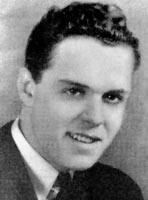 |  |
|
 | |||||
| |||||
1944The USS OZBOURN (DD 846), former flagship of, Destroyer Division 92 and Destroyer Division 112 was a 710 class-long hull destroyer named in honor of Private Joseph William Ozbourn, USMCR who was posthumously awarded the Medal of Honor for gallantly giving his life to save others in the service of his country. TThe Ozbourn was built at Bath, Maine by the Bath Iron Works and was launched on 22 December 1945 with Mrs. Joseph W. Ozbourn as the ships sponsor. Commander Bernard A. Smith was the first to assume command of the new destroyer. In August 1946 he took the shipfrom Boston through the Panama Canal to her new home port of San Diego, California. On 6 January 1947 the OZBOURN departed from San Diego for her first tour of duty in the Far East. During this tour the OZBOURN was instrumental in saving a Chinese oil tanker that was in distress. By attaching a cable to the tanker, the OZBOURN towed it to Kiirun, Formosa. In May 1947 while en route to La Perouse Straits the OZBOURN again came to the aid of a distressed vessel. A merchant ship ran aground and later broke in half. The OZBOURN picked up the up the crew and transported them safely to Yokosuka, Japan. The QZBOURN returned to San Diego in October 1947, and on 21 October Commander Smith was relieved as Commanding Officer by Commander Norman E. BLAISDELL. 1948On 1 October 1948 the OZBOURN departed San Diego for her next tour of duty in the Far East. This proved to be a short tour because on November 23, 1948 the OZBOURN and USS CHANDLER (DD 717) collided. The crew was at general quarters during darkened ship operations when the collision occurred resulting in the loss of two OZBOURN crew members. The quick thinking and hard work of the damage control parties saved the ship, and she headed back to the Long Beach Naval Shipyard for replacement of the bow and for general repairs. Click here for picture. On 14 May 1949 Commander BLAISDELL was relieved as Commanding Officer by Commander Ross E. FREEMAN. During the summer the OZBOURN participated in a six week Naval Midshipman training cruise visiting Panama and participating in various fleet exercises. After undergoing a routine overhaul at Mare Island Naval Shipyard, the OZBOURN in company with USS NORTON SOUND left San Diego in April 1950 to conduct the first guided missile tests at, sea. The OZBOURN acted as observing ship and assisted the NORTON SOUND in what was considered a bold step in the use of guided missiles by surface fleet. Upon completion of the tests, the OZBOURN stopped at the Christmas Islands before returning to San Diego. |
| |||||||||||||||||
 Private
Ozbourn was a Browning automatic rifleman with the First Battalion, Twenty Third Regiment, Fourth Marine Division, during the invasion of Tinian
Island in the Marianas group in 1944. On 30 July 1944 the Marines were faced with the task of clearing the remaining
enemy troops from dugouts and pillboxes along a tree line. Private Ozbourn with two men on either side was advancing
toward a dugout with an armed hand grenade. As he was about to throw the hand grenade a violent explosion from the
entrance of the dugout severely wounded the four men and himself. Unable to throw the hand grenade into the dugout
and with no place to hurl it without endangering the other men, he unhesitatingly grasped it close to his body and fell
upon it, absorbing the full impact of the explosion but saving his comrades. It was this deep devotion to duty and
courageous heroism that inspired the naming of destroyer number 846 the USS OZBOURN.
Private
Ozbourn was a Browning automatic rifleman with the First Battalion, Twenty Third Regiment, Fourth Marine Division, during the invasion of Tinian
Island in the Marianas group in 1944. On 30 July 1944 the Marines were faced with the task of clearing the remaining
enemy troops from dugouts and pillboxes along a tree line. Private Ozbourn with two men on either side was advancing
toward a dugout with an armed hand grenade. As he was about to throw the hand grenade a violent explosion from the
entrance of the dugout severely wounded the four men and himself. Unable to throw the hand grenade into the dugout
and with no place to hurl it without endangering the other men, he unhesitatingly grasped it close to his body and fell
upon it, absorbing the full impact of the explosion but saving his comrades. It was this deep devotion to duty and
courageous heroism that inspired the naming of destroyer number 846 the USS OZBOURN.